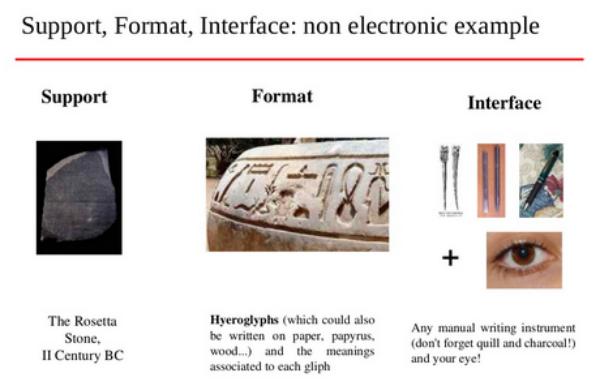Escaping the Digital Dark Ages. Ten years later
No escape yet, sorry.

Today, while cleaning up my bookmarks, I realized that exactly ten years ago I bookmarked an article titled Escaping The Digital Dark Age. The article is much older, from 1999. But it’s still important reading today, so here are the most interesting parts, with some comments of mine.
Great insights, and definitions
“Information lives in two major dimensions-space and time. With digitization and the Internet, all information is now potentially global. The space dimension for data will keep exploding, but the time dimension is shrinking.”
“If raw data can be kept accessible as well as stored, history will become a different discipline, closer to a science, because it can use marketers' data-mining techniques to detect patterns hidden in the data. You could fast-forward history, tease out correlated trends, zoom in on particular moments.”
Me: Agree 100%.
The cloud of today? It is like 1999. Just worse
“Due to the relentless obsolescence of digital formats and platforms, along with the ten-year life spans of digital storage media such as magnetic tape and CD-ROMs, there has never been a time of such drastic and irretrievable information loss as right now.”
Me: Today we have “the cloud”, which is both a huge success, and a huge failure. It is a success, because it hides any hardware obsolescence issues, letting well-funded specialists deal with them. Even for free, apparently. It is a failure in the sense that it only works as advertised for those with access to real and reliable broadband. And, above allm it is a failure because it makes information and culture even more ephemeral than it was when each of us had to personally care for their own hard drives. Just try to retrieve, in a complete and REALLY portable and reusable format, everything you put in any social network of today to see what I mean. Indeed, the article says:
“Is the net itself profoundly robust and immortal, or is it the most ephemeral digital artifact of all?”
Some misunderstandings of 1999 are still here
“There is still nothing in the digital world like acid-free paper. The rate of digital obsolescence keeps accelerating, and the serious search for a long-term strategy for storage has yet to begin. [But we are already] Losing Our Collective Memory.”
“While the durability of bits is still moot, the atoms in ink on paper have great stability.”
Me: Too many people (including policy makers) still believe this in 2020. Digital hardware, like Virtual Reality equipment is hard to keep running for decades or centuries. That is true.
But that truth only applies to physical devices. Bits, instead, are immaterial (as far as this topic is concerned…) and can represent every conceivable kind of quantifiable data and documents. And the truth is that bits are much, much more resilient and easier to preserve in the long run than paper, if we as a society only understand how they actually work, and how to use them. Luckily for you, all you need to know on this topic is in this slideshow of mine